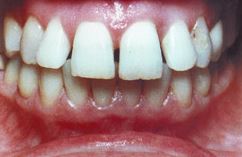Adult Bite Correction
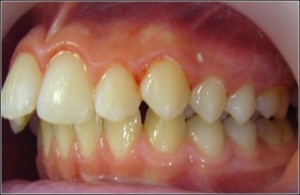
Wrong bite occurs in 90% of the population.
Both children and adults suffer from anomaly of varying severity. With a mild degree of occlusal change, the aesthetics and functionality of the teeth practically do not suffer.
However, often the existing problems can develop into a severe pathology, which requires expensive treatment.
Make your teeth even, and a beautiful smile is never too late.
Ideally, it is better to correct the bite in childhood, however, adults only go to the orthodontist after problems associated with malocclusion occur.
Especially often, problems such as periodontal disease, tooth enamel wear, frequent headaches, and elderly people suffer.
The presence of modern technology makes it possible to correct occlusion in adults.
Among these techniques:
- A bracketless method that allows you to replace braces with trainers or a cap.
- A surgical way to correct an abnormality.
These methods do not spoil the aesthetics at all and are quite effective.
Bite correction methods
The most common methods for correcting malocclusion are gum massage, myogymnastics in combination with orthodontic appliances.
Braces
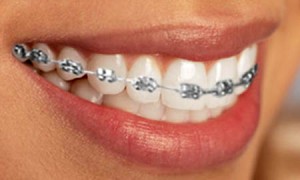
- The roots of the teeth are held in the jaw due to the connective tissue, which stretches under the influence of the bracket system.
- As a result of the pressure of the structure on the jaw and stretching of the connective tissue, a change in the position of the teeth occurs, which allows you to correct the malocclusion.
- The use of the bracket system provides for their long-term use without the ability to shoot.
Alternative ways to correct anomalies
- These include the use of mouthguards, dental plates, trainers, veneers, etc.
These correction methods are more suitable for children, as they can not completely correct the bite of an adult.
Surgical methods
Often, surgical methods of exposure are used to eliminate malocclusion.
- To do this, an incision is made in the gums and bone tissue, which allows the jaw to be aligned and the teeth to take the correct position.
- In case of removal of teeth that interfere with alignment, a denture can be installed in their place.
The choice of a particular design depends on the condition of the patient’s dentition. The system used should act on the anomaly with maximum efficiency.
Which of the bite correction devices is suitable for the patient is decided by the orthodontist.
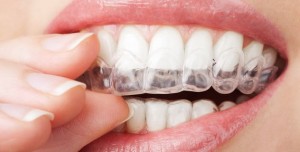
- In the case of treatment with braces, the patient can choose the design to your taste and budget. But it should be remembered that a correctly selected device is only half the success, and the second depends on the qualifications of the specialist.
- Transparent mouthguards are a more aesthetic and modern look of an orthodontic device.Modern mouthguards can eliminate almost any malocclusion. However, the use of a mouth guard requires discipline from the patient, since it must be worn for at least 22 hours a day. The disadvantage of this method of treatment is also the high cost of mouthguards.
Bite correction at home
Any anomaly in the development of the dentofacial system requires immediate intervention by a specialist. It is unlikely that it will be possible to fix the bite on your own without the help of an orthodontist.
The only things a patient can do at home are:
- Gum massage that will help align teeth.
- Performing certain exercises regularly.
- If, on the recommendation of a doctor, the patient will be shown the use of a removable structure (trainers, mouth guards), then at home it can be removed and hygienic cleaned.
When do you use trainers?
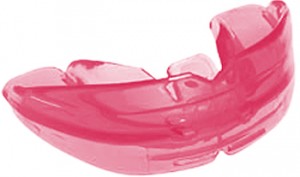
Trainers are an orthodontic appliance made of flexible silicone.
They are multifunctional and can be used in the following cases:
- In case of violation of swallowing or nasal breathing.
- If the use of braces is not possible.
- With crowding of the front group of teeth of the lower jaw.
- In the presence of minor abnormalities of a dentition.
Indications
Adults need to see an orthodontist in the following cases:
- The presence of aesthetic defects.
- Incorrect jaw closure.
- Violation of the proportions of the face.
- The presence of pain when chewing food.
Before installing dentures, a patient with a malocclusion must necessarily undergo the necessary treatment at the orthodontist.
Otherwise, time and money for prosthetics or dental implants will be wasted. In addition, the installation of implants or prostheses can adversely affect the health of the patient.
Video: “Bite Correction”
Complications
Improper bite in an adult can lead to the following consequences:
- Strong tooth erasure.
- Damage to dentures.
- Rapid wear of the temporomandibular joint, the restoration of which will require surgical intervention.
- Premature appearance of wrinkles and various changes in appearance.
Fix anomalies without braces
Often, patients who have malocclusion prefer high-tech treatments.
These methods include:
- The use of transparent cap or eliner.
- Aligning teeth with veneers or lumineers, which can hide various imperfections in the teeth. The advantage of installing veneers is a fairly quick elimination of visible defects and an acceptable cost.
Veneers are used in the following cases:
|
|
|
- To lengthen tooth crowns, if short crowns contribute to the development of malocclusion.
- For correction of irregular shape or position of teeth.
- In the presence of chips on the teeth that impede the development of the correct bite.
Cost
Cost correction of occlusion in adults depends on the nature of the occlusion and the complexity of the work.
Prices for used orthodontic equipment vary greatly and depend on the type of material.
The most expensive method of treatment is the use of a mouth guard, but at the same time it is considered more comfortable.
| Orthodontic devices | Price (in rubles) |
| Ceramic bracket systems (for 1 pc.) | from 900 |
| Lingual braces | from 1000 |
| Children's trainer (Australia) | from 5500 |
| Children's record (Germany) | from 1800 |
Reviews
- At 25, I got braces and literally eight months later my teeth fell into place. After the bracket system was removed, the orthodontist recommended wearing a corrective cap for the night. As a result, the bite was corrected.
- After the age of 40, I decided to correct the bite. Wore braces for over a year. I had to limit myself to food: eat mashed food, talk less, because everything hindered and hurt.There is practically no result. I realized that all this was in vain.
- At thirty, I decided to fix the bite. The teeth of the upper jaw looked forward (they did not have enough space). For this reason, wisdom teeth had to be removed. I got metal braces, as they have the most reliable locks. Everything hurt only the first two days. But they gave me a special wax, thanks to which there is no friction, and everything was fine.
- My lower jaw protrudes slightly. With such a defect, discomfort is constantly present, and increased even more with age. At 55, I decided to correct the bite, but the orthodontist refused me.
- My girlfriend corrected her bite at 23, though she wore the device all the time and even slept with it. But now her smile looks like a million.
Photo: before and after
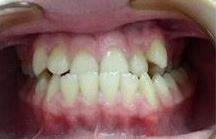 |
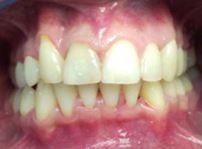 |
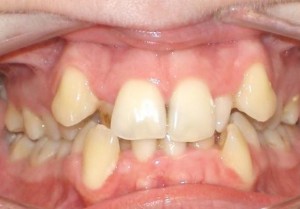 |
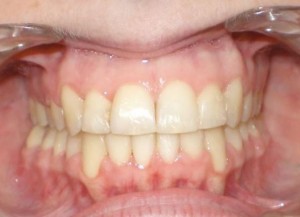 |
 |
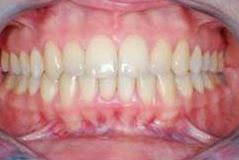 |
